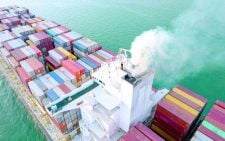Virus curbs drive economy into recession in Q3 of 2020

Kenya’s economy slid into a recession in the third quarter of 2020 after Covid-19 containment measures forced business activities to shrink by -1.1 per cent.
The third quarter contraction cames after the economy shrank by 5.5 per cent in the second quarter.
A recession happens when an economy contracts for two successive quarters.
Latest Kenya National Bureau of Statistics (KNBS) data shows the economic slowdown was driven by Covid-19 containment measures that led to shutdowns in factories, learning institutions, accommodation and food services.
“The economy is estimated to have contracted by 1.1 per cent during the third quarter of 2020 compared to a growth of 5.8 per cent in the corresponding quarter of 2019,” Macdonald Obudho, KNBS director general said.
The tourism sector ground to a halt forcing accommodation and food service activity down 58 per cent compared to 10 per cent growth in third quarter of 2019.
“This led to either complete closure of businesses in accommodation and food service sector or significantly scaled down operation,” he said in a statement.
Ministry of Tourism late last year said the sector had lost more than Sh100 billion in 10 months to October.
Kenya confirmed its first coronavirus infection in mid-March and later imposed a partial lockdown.
Shutdowns in key markets such as the European Union and the UK as well as global travel restrictions hit the country’s main foreign-income earners, including tourism and exports of tea, flowers, fruit and vegetables.
However, agriculture, forestry and fishing sector grew 6.3 per cent from a five per cent expansion in the same period in 2019.
Robust growth
The robust growth in agricultural activities was driven by favourable weather conditions witnessed in the first three quarters of the year, while the substantial growth in the construction sector was seen in the increase in consumption of cement.
“The impressive performance was supported by increases in tea production, exports of fruit and sugarcane production,” the statistics office said.
Speaking after the Central Bank of Kenya (CBK) on Wednesday retained the base lending rate at 7 per cent for the sixth time in a row, Governor Patrick Njoroge said leading indicators for the Kenyan economy point to a recovery particularly in the fourth quarter of 2020, from the disruptions earlier in the year.
“This recovery is supported largely by strong performance in the agriculture and construction sectors, resilient exports, and continued recovery in manufacturing and services,” Njoroge who ias the Monetary Policy Committee chair said.
The committee said the economy is expected to rebound strongly in 2021, supported by a recovery in the services sectors particularly education, manufacturing, agriculture and the ongoing policy support through the government’s economic recovery plan.














